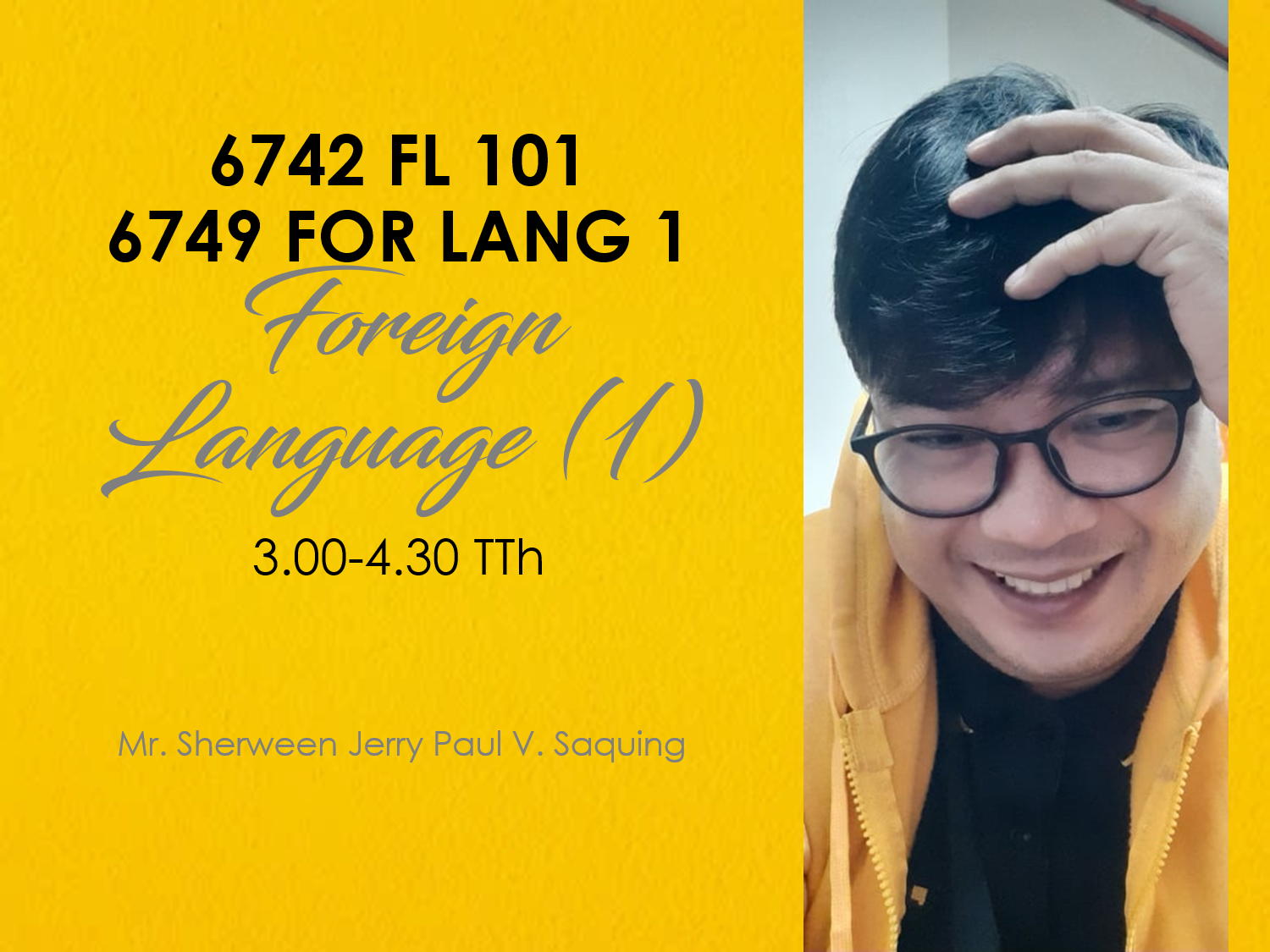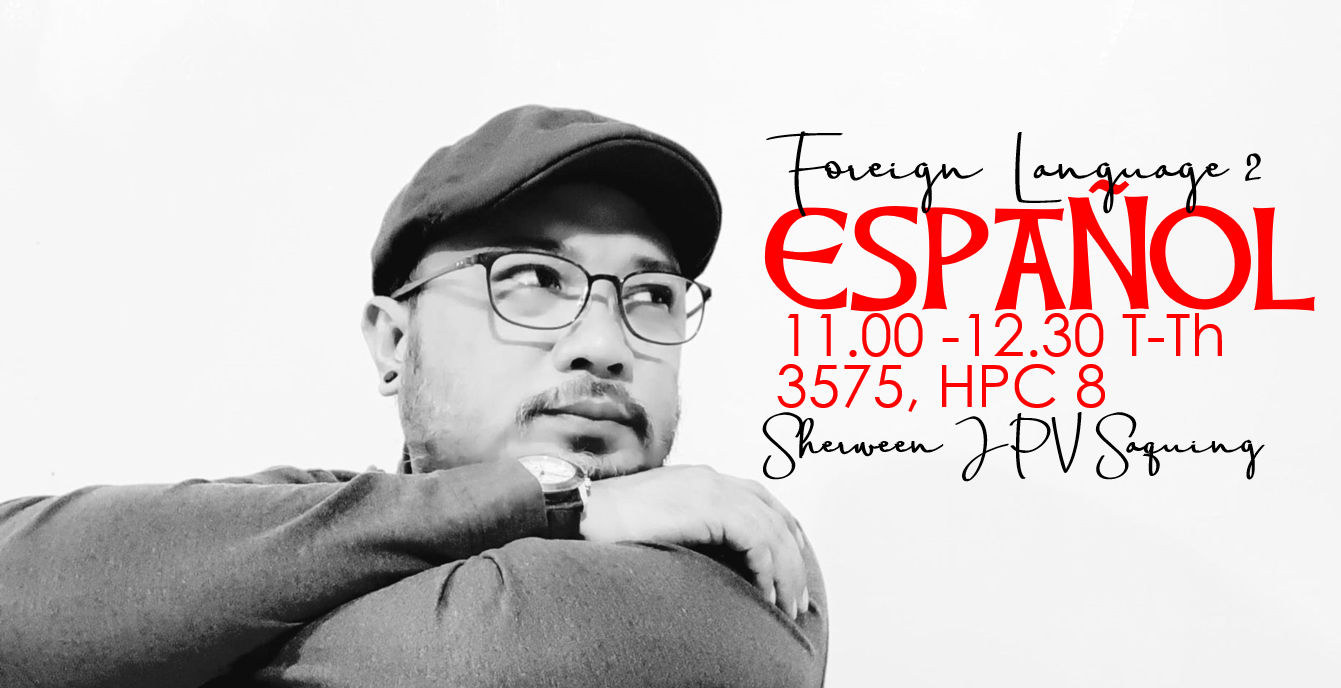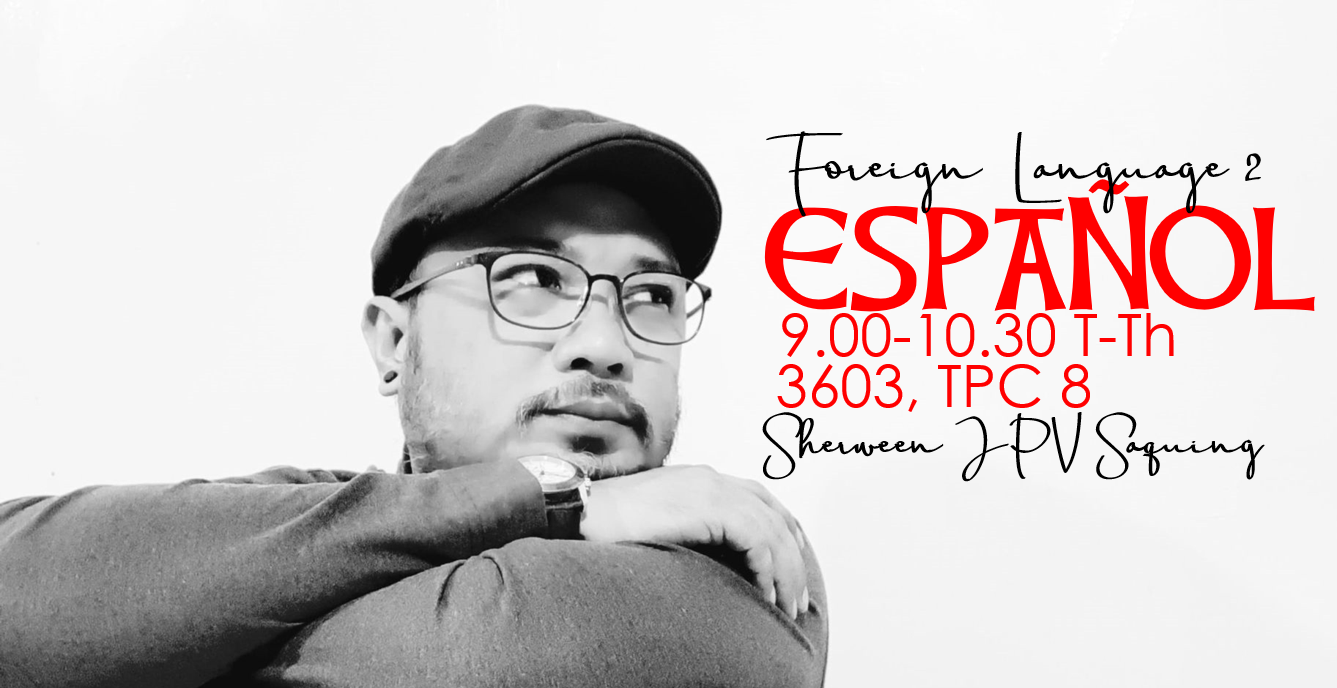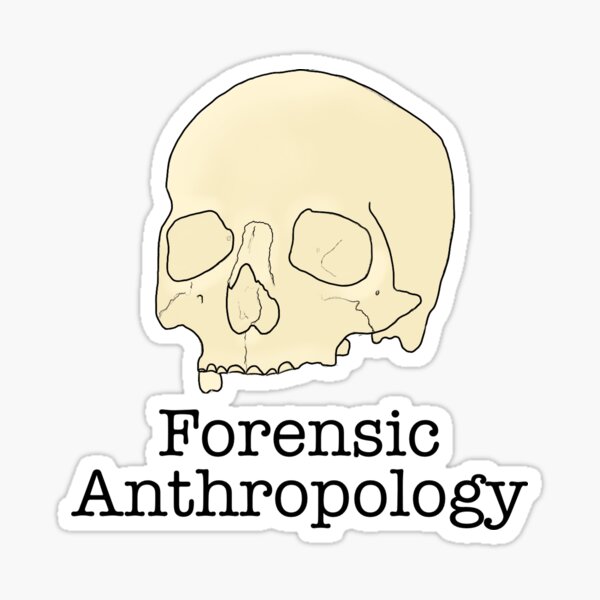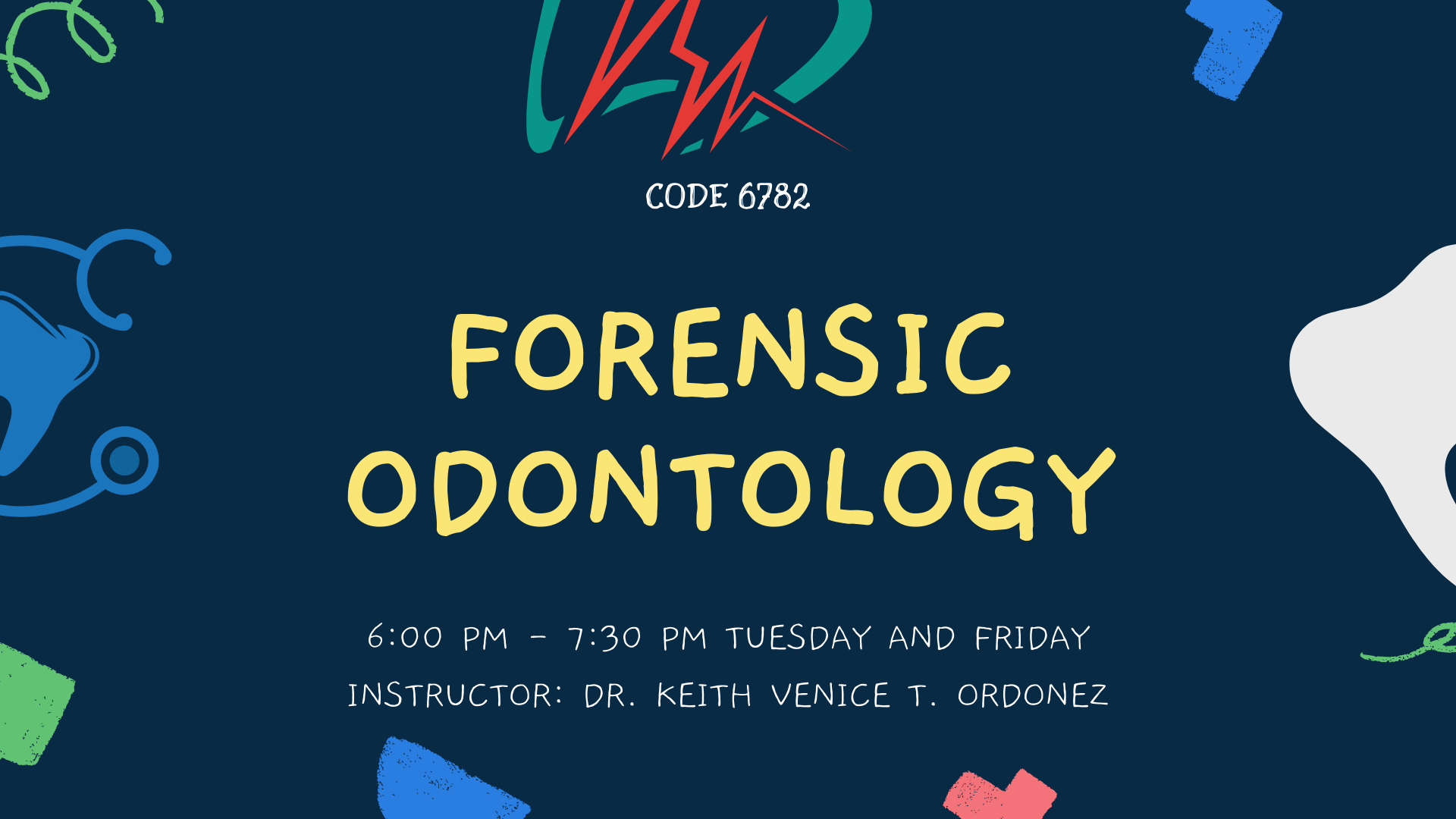Search results: 3380
Spanish (español), also called Castilian, is a Romance language that originated in Castille, a region in Spain. There are approximately 407 million people speaking Spanish as a native language, making it the second-most-spoken language by number of native speakers after Mandarin. Spanish has the largest number of native speakers of any Indo-European language in the world, the largest language family on Earth. It is one of the six official languages of the United Nations, and is used as an official language by the European Union.
This course studies the Spanish language used as daily conversation in Hispanic countries. It focuses on basic grammar and sentence structures, enabling the learner to immerse himself in conversational Spanish. Thorough discussions of Philippine history in the Spanish context and contemporary Spanish history and culture are included in the course. Lectures and exercises are enhanced with showings of Spanish films and documentaries, as well as other media of communication. At the end of the course, the student shall be able to appreciate Spanish language and culture, and how they affect the quotidian living of a Filipino engaged in the local community and in the world.
- Teacher: SHERWEEN JERRY PAUL SAQUING
- Enrolled students: No students enrolled in this course yet
Spanish (español), also called Castilian, is a Romance language that originated in Castille, a region in Spain. There are approximately 407 million people speaking Spanish as a native language, making it the second-most-spoken language by number of native speakers after Mandarin. Spanish has the largest number of native speakers of any Indo-European language in the world, the largest language family on Earth. It is one of the six official languages of the United Nations, and is used as an official language by the European Union.
This course is the second of two parts in the study of the Spanish language used as daily conversation in Hispanic countries. It reinforces basic grammar and sentence structures, enabling the learner to immerse himself in conversational Spanish. Thorough discussions of Philippine history in the Spanish context and contemporary Spanish history and culture are included in the course. Lectures and exercises are enhanced with showings of Spanish films and documentaries, as well as other media of communication. At the end of the course, the student shall be able to appreciate Spanish language and culture, and how they affect the quotidian living of a Filipino engaged in the local community and in the world.
- Teacher: SHERWEEN JERRY PAUL SAQUING
- Enrolled students: 46
Spanish (español), also called Castilian, is a Romance language that originated in Castille, a region in Spain. There are approximately 407 million people speaking Spanish as a native language, making it the second-most-spoken language by number of native speakers after Mandarin. Spanish has the largest number of native speakers of any Indo-European language in the world, the largest language family on Earth. It is one of the six official languages of the United Nations, and is used as an official language by the European Union.
This course is the second of two parts in the study of the Spanish language used as daily conversation in Hispanic countries. It reinforces basic grammar and sentence structures, enabling the learner to immerse himself in conversational Spanish. Thorough discussions of Philippine history in the Spanish context and contemporary Spanish history and culture are included in the course. Lectures and exercises are enhanced with showings of Spanish films and documentaries, as well as other media of communication. At the end of the course, the student shall be able to appreciate Spanish language and culture, and how they affect the quotidian living of a Filipino engaged in the local community and in the world.
- Teacher: SHERWEEN JERRY PAUL SAQUING
- Enrolled students: 32
Spanish (español), also called Castilian, is a Romance language that originated in Castille, a region in Spain. There are approximately 407 million people speaking Spanish as a native language, making it the second-most-spoken language by number of native speakers after Mandarin. Spanish has the largest number of native speakers of any Indo-European language in the world, the largest language family on Earth. It is one of the six official languages of the United Nations, and is used as an official language by the European Union.
This course is the second of two parts in the study of the Spanish language used as daily conversation in Hispanic countries. It reinforces basic grammar and sentence structures, enabling the learner to immerse himself in conversational Spanish. Thorough discussions of Philippine history in the Spanish context and contemporary Spanish history and culture are included in the course. Lectures and exercises are enhanced with showings of Spanish films and documentaries, as well as other media of communication. At the end of the course, the student shall be able to appreciate Spanish language and culture, and how they affect the quotidian living of a Filipino engaged in the local community and in the world.
- Teacher: SHERWEEN JERRY PAUL SAQUING
- Enrolled students: 20
Spanish (español), also called Castilian, is a Romance language that originated in Castille, a region in Spain. There are approximately 407 million people speaking Spanish as a native language, making it the second-most-spoken language by number of native speakers after Mandarin. Spanish has the largest number of native speakers of any Indo-European language in the world, the largest language family on Earth. It is one of the six official languages of the United Nations, and is used as an official language by the European Union.
This course is the second of two parts in the study of the Spanish language used as daily conversation in Hispanic countries. It reinforces basic grammar and sentence structures, enabling the learner to immerse himself in conversational Spanish. Thorough discussions of Philippine history in the Spanish context and contemporary Spanish history and culture are included in the course. Lectures and exercises are enhanced with showings of Spanish films and documentaries, as well as other media of communication. At the end of the course, the student shall be able to appreciate Spanish language and culture, and how they affect the quotidian living of a Filipino engaged in the local community and in the world.
- Teacher: SHERWEEN JERRY PAUL SAQUING
- Enrolled students: 46
- Teacher: SHERWEEN JERRY PAUL SAQUING
- Enrolled students: 34
This course teaches the application of the methods of physical anthropology and archaeology to the collection and analysis of skeletonized human remains. Students will learn the basic human dental and skeletal anatomy necessary to maximize the information obtained from human remains, including: how to determine the age and sex of the skeletal remains; associated with the ethnic affiliations, stature and handedness; determining the presence of trauma and/or disease. Students will also experience the precise scientific methodology for recovery of remains, including excavation methods and record keeping. They will work with both fingerprint analysis and DNA identification.
- Teacher: CHRISTOPHER ALLEN MARQUEZ
- Enrolled students: 12
- Teacher: Marish Leen PAGULAYAN
- Enrolled students: 18
- Teacher: JUNI CALIGUE
- Enrolled students: 23
- Teacher: GLICERIA MARZAN
- Enrolled students: 10
- Teacher: GLICERIA MARZAN
- Enrolled students: 30
- Teacher: GLICERIA MARZAN
- Enrolled students: 30
- Teacher: Rona Fernandez
- Enrolled students: 15
- Teacher: Marish Leen PAGULAYAN
- Enrolled students: 10
- Teacher: Napoleon Obana
- Enrolled students: 13
- Teacher: Napoleon Obana
- Enrolled students: 26
Forensic odontology is proper handling, examination, and evaluation of dental evidence, which will be presented in the interest of justice. The evidence that may be derived from the teeth, the age (in children) and identification of the person to whom the teeth may belong
- Teacher: keith venice ordonez
- Enrolled students: 10
- Teacher: MARY KATHRINE VALDEZ
- Enrolled students: 48
- Enrolled students: 10
- Teacher: Marish Leen PAGULAYAN
- Enrolled students: 18

